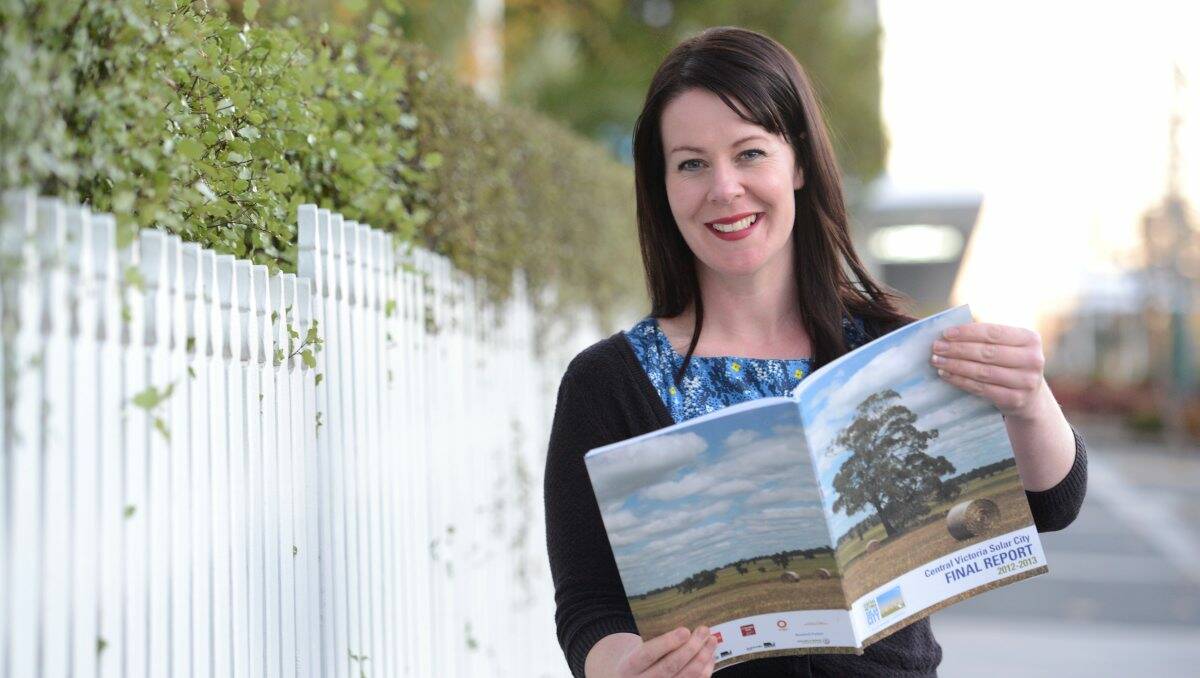A RENEWABLE energy trial has had fantastic results, according to those behind the project.
Subscribe now for unlimited access.
or signup to continue reading
About 3500 central Victoria residents and businesses took part in the Central Victoria Solar City trial.
Project director Leah Sertori said the “ambitious” trial aimed to cut energy consumption and save money through a variety of measures.
“The one that I think was the most exciting was the cheapest one, in the home energy assessments,” she said.
“It saved the most power, an average of 9 per cent of their total bill. Our participants saved a total of $730,000.
“Imagine if all households in central Victoria were able to reduce their energy bill and we extrapolated that saving.”
Ms Sertori said participants had also reduced consumption by 22 per cent by installing solar hot water, five per cent through in-home displays and retrofits and 13 per cent in all residential interventions.
A total of three million kilowatt hours were saved during the trial.
“The trial overall was hugely successful,” Ms Sertori said.
“But it didn’t work for people on low incomes and didn’t work for people renting their homes.
“The reason for that is the energy saving measures had to be purchased by customers up front and then we offered them a cash-back incentive for purchasing the product.”
Ms Sertori said the next step was to make all relevant stakeholders aware of the importance of the energy saving measures.
“That includes examining options to generate electricity from waste and solar, and through the development of community power stations,” she said.
“That would be the same as the Bendigo Community Bank model.
“The idea is people invest in developing new power stations and local shareholders benefit from the successful operation of that business.
“We’re looking at how mum-and-dad shareholders become owners of renewable power stations as well as customers of that business.
“That was thought to be hugely visionary and really cutting edge thinking.”
Ms Sertori said local trial participants had the highest satisfaction ratings of the seven areas that took part.


